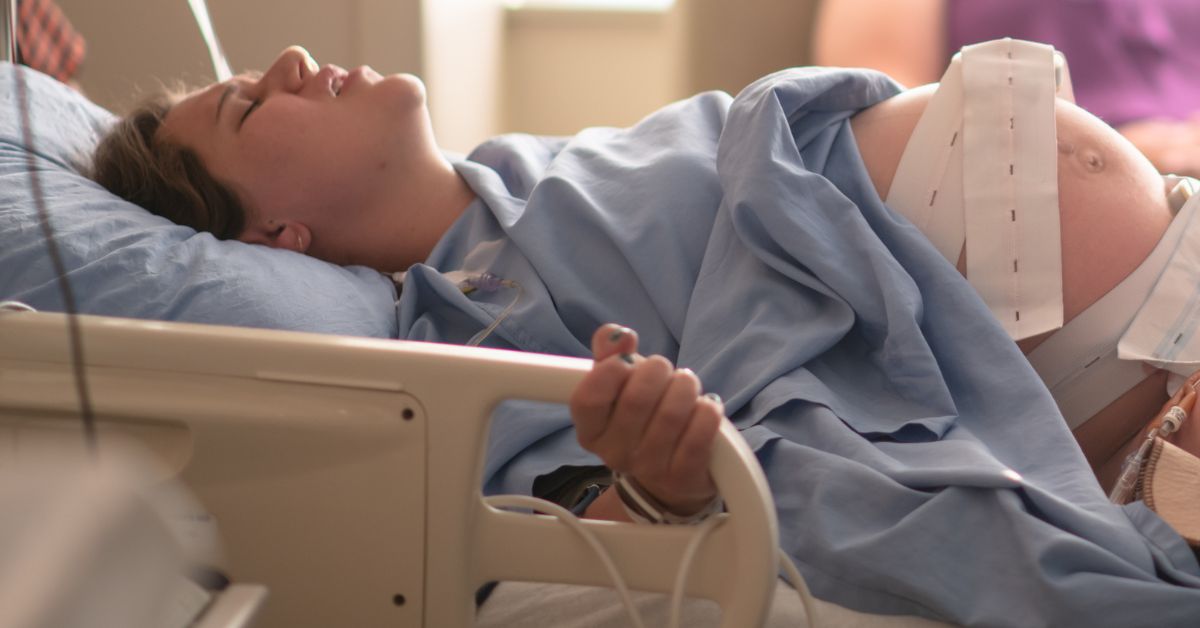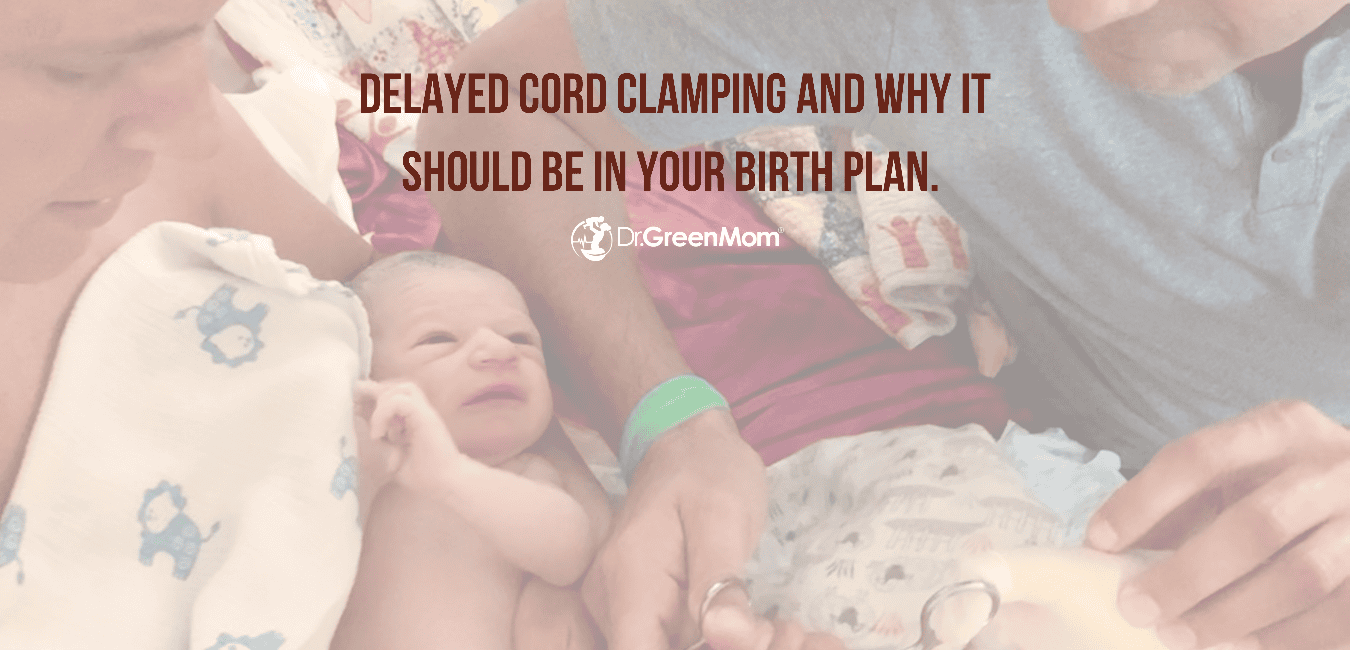Pregnancy comes with a host of new sensations, and one of the most confusing can be contractions: Are they Braxton Hicks or labor contractions? Knowing the difference can help you feel more confident and prepared as you approach your due date. In this article, you’ll learn about Braxton Hicks contractions, how they compare to labor contractions, when they typically occur, and when to call your midwife, OB-GYN, or healthcare provider.
What Are Braxton Hicks Contractions?
Braxton Hicks contractions are often referred to as “false labor” or “practice contractions” and are thought to be one of your body’s natural ways of preparing for labor. They don’t lead to the birth of your baby (1) but serve as a form of rehearsal for the real thing.
During Braxton Hicks contractions, your uterus is contracting (1). The muscle fibers tighten and contract intermittently, creating a sensation of tightening or hardening in the abdomen. However, unlike labor contractions, which are coordinated and progressively intensify to cause changes in the cervix, Braxton Hicks contractions are irregular and don’t lead to cervical dilation or effacement.
These “practice” contractions play a role in improving blood flow to the uterus and toning the uterine muscle (1). This toning may even help the uterus become more efficient and responsive when true labor begins, ensuring it’s ready for the more intense contractions that will ultimately help deliver your baby.
You may also like this article: Pelvic Floor Health During Pregnancy & Beyond
When Do Most Women Experience Braxton Hicks?
It is thought that Braxton Hicks contractions may start happening as early as 6 weeks into pregnancy (1), but they are generally not felt until around 16 weeks at the earliest and even feeling them at 16 weeks is relatively uncommon, especially in first pregnancies. Most people start noticing them in the third trimester around 28 weeks or later. That said, if you’re feeling strong, regular contractions before 37 weeks, it’s important to contact your healthcare provider as this could be a sign of preterm labor.
Along with experiencing Braxton Hicks contractions, you may also be experiencing nausea and fatigue. Learn more:

Are Braxton Hicks More Common in Subsequent Pregnancies?
Braxton Hicks contractions tend to be more noticeable in second or subsequent pregnancies. This could be because the uterine muscles are more sensitive after having stretched during a previous pregnancy or you’re able to recognize the sensation more easily because you’ve experienced them before.
What Do Braxton Hicks Feel Like?
Braxton Hicks contractions typically feel like a tightening or hardening of the uterus. You might notice your belly becoming firm to the touch, almost like a clenched muscle, and then relaxing. They often cause mild discomfort but are not usually painful. The sensation can feel like light cramping, a squeezing feeling, or a temporary pressure in the abdomen.
They tend to be irregular in both timing and intensity. You might feel them a few times in a day and then not again for days or even weeks. Unlike labor contractions, Braxton Hicks don’t get stronger, longer, or closer together over time (1).
For occasional aches and mild discomfort during pregnancy, herbs can provide some gentle relief: Herbs For Pain Relief In Pregnancy & Lactation
What Causes Braxton Hicks Contractions?
While the exact cause of Braxton Hicks contractions isn’t fully understood, several factors are known to be potential triggers of Braxton Hicks contractions, including (1):
- Dehydration: Not drinking enough fluids can lead to uterine irritability.
- Physical Activity: Exercise or overexertion can bring on practice contractions.
- Full Bladder: Having a full bladder can stimulate the uterus to contract.
- Sexual Activity: The muscle contractions and the hormones released during intimacy can trigger Braxton Hicks contractions.
- Stress: Emotional stress or anxiety may increase uterine activity.
Sometimes, Braxton Hicks contractions occur without any obvious trigger—they’re simply part of your body’s preparation for labor.
What Are Labor Contractions?
Labor contractions are your body’s way of opening the cervix to allow your baby to be born. Unlike Braxton Hicks, labor contractions follow a regular, predictable pattern and lead to cervical changes, such as dilation (opening) and effacement (thinning) (2).
What Do Labor Contractions Feel Like?
Labor contractions often start as a dull ache or cramping sensation in the lower back or abdomen, similar to strong menstrual cramps. Over time, they become more intense, painful, and rhythmic. Many people describe them as a wave-like sensation: the pain builds, peaks, and then gradually subsides.
Unlike Braxton Hicks, labor contractions (2):
- Become progressively stronger and more painful
- Last longer and occur at regular intervals
- Do not go away with rest, hydration, or changing positions
- Can radiate from the back to the front of the abdomen
Key Differences Between Braxton Hicks and Labor Contractions
While Braxton Hicks and labor contractions can feel similar, there are key differences that can help you tell them apart. Below is a “cheat sheet” with some general guidelines.
| Braxton Hicks Contractions | Labor Contractions |
| Irregular in timing and don’t get closer together | Regular pattern, increasing in frequency and intensity |
| Mild discomfort, often described as tightness | Painful, intense, and progressively stronger |
| Stop with rest, hydration, or changing positions | Continue regardless of activity or position |
| Felt mostly in the front of the abdomen | Sometimes start in the back and move to the front |
| No cervical changes | Cause the cervix to dilate and efface |
How to Tell if You’re in Labor
Braxton Hicks contractions and early labor contractions can feel similar, and it can be hard to differentiate. Here are some tips to help you discern if you might be in labor (3):
- Contractions become stronger, longer, and closer together: Unlike Braxton Hicks, labor contractions don’t ease up over time.
- Changing positions doesn’t help: They continue whether you’re resting, walking, or lying down.
- You feel increasing pressure in your pelvis or lower back: This pressure often intensifies as labor progresses.
- You notice a “bloody show”: A pink or bloody mucus discharge from the cervix indicates that labor is near.
- Your water breaks: This can be a sudden gush or a slow trickle of amniotic fluid.
Note that labor presents differently for everyone and even presents differently from one pregnancy to another. You do not necessarily need to experience all the above symptoms to be in active labor. If you’re unsure whether you’re in labor, don’t hesitate to call your healthcare provider for guidance.

When to Call Your Doctor or Midwife
Knowing when to call your provider can be tricky – especially during the final weeks of pregnancy when you might be experiencing frequent Braxton Hicks. Contact your healthcare provider if:
- Contractions are regular, painful, and increasing in intensity
- Your water breaks, especially if the fluid is green, yellow, or foul-smelling
- You are bleeding or experiencing severe cramping
- You feel a decrease in your baby’s movements
- You experience signs of preterm labor (regular contractions before 37 weeks)
- You have severe headache, vision changes, chest pain, or sudden swelling (signs of preeclampsia)
The 5-1-1 rule (meaning your contractions are 5 minutes apart, lasting 1 minute each, and have continued for at least 1 hour) is often used as a general guideline on when to call a provider or go to the hospital. That said, it is important to listen to your body and trust your gut because not everyone follows the same labor pattern.
For pregnancies that are less than 37 weeks, any regular contractions should prompt a call to your healthcare provider immediately, as this could be a sign of preterm labor.
How to Relieve Braxton Hicks Contractions
If Braxton Hicks contractions are uncomfortable, here are some ways to find relief:
- Stay Hydrated: Dehydration is a common trigger. Drinking water can often reduce Braxton Hicks contractions.
- Change Positions: Move around if you’ve been sitting or lie down if you’ve been active.
- Practice Relaxation Techniques: Deep breathing, prenatal yoga, or a warm bath can help.
- Empty Your Bladder: A full bladder can irritate the uterus and trigger contractions.
- Rest: Sometimes simply resting can help alleviate Braxton Hicks contractions.
If the contractions don’t subside with these measures, or if they become stronger, more regular, or more painful, you might be experiencing true labor contractions.
Can Braxton Hicks Turn into Labor?
Braxton Hicks contractions don’t directly turn into real labor (1), but they can become more frequent and intense as you approach your due date. Some people experience what’s known as prodromal labor—a gray area between Braxton Hicks and true labor. These contractions can feel strong and regular but don’t result in significant cervical changes. While prodromal labor can be exhausting, it is often a sign that true labor is on the horizon!
Summary
Braxton Hicks contractions, often called “false labor” or “practice contractions,” are a normal part of pregnancy that help prepare the body for true labor. Typically starting in the second trimester, these mild, irregular contractions improve uterine muscle tone and enhance blood flow, supporting fetal oxygenation. Unlike true labor contractions, Braxton Hicks contractions are unpredictable, don’t cause cervical changes, and often subside with rest, hydration, or position changes. Trust your instincts—if you’re unsure whether you’re experiencing Braxton Hicks or labor contractions, consult your healthcare provider.
References:
- Raines DA, Cooper DB. Braxton Hicks Contractions. [Updated 2023 Aug 8]. In: StatPearls [Internet]. Treasure Island (FL): StatPearls Publishing; 2025 Jan-. Available from: https://www.ncbi.nlm.nih.gov/books/NBK470546/
- McEvoy A, Sabir S. Physiology, Pregnancy Contractions. [Updated 2022 Sep 19]. In: StatPearls [Internet]. Treasure Island (FL): StatPearls Publishing; 2025 Jan-. Available from: https://www.ncbi.nlm.nih.gov/books/NBK532927/
- Hutchison J, Mahdy H, Hutchison J. Stages of Labor. 2023 Jan 30. In: StatPearls [Internet]. Treasure Island (FL): StatPearls Publishing; 2025 Jan–. PMID: 31335010.








